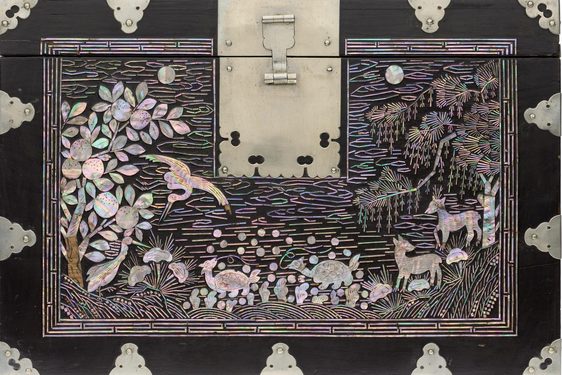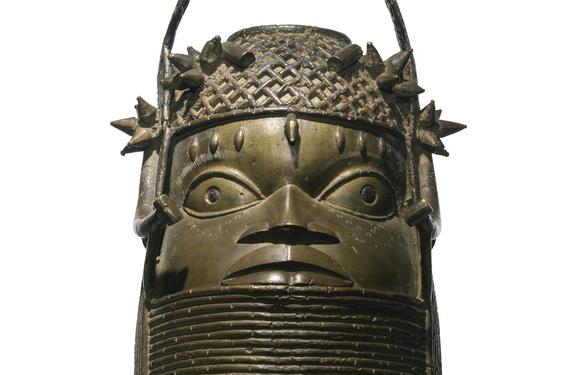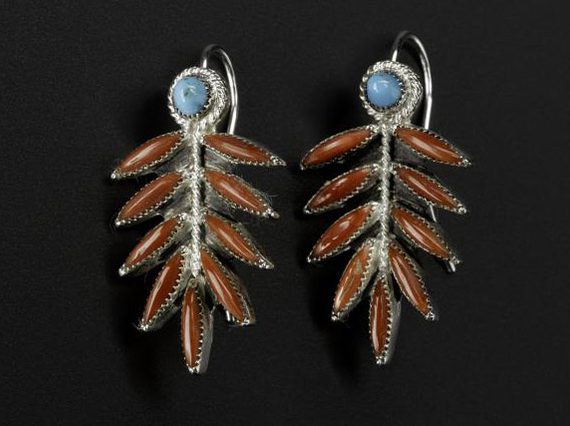
Native American Jewellery
News Story
Navajo and Pueblo jewellery originates from the Southwest United States. It is denoted by, though not restricted by, its use of turquoise and silver. National Museums Scotland (NMS) has early and contemporary examples of this jewellery. These pieces demonstrate skill and craftsmanship. They also offer insights into the traditions and culture of this region.
In the early 20th century, NMS acquired its first pieces of Southwestern jewellery. James E. Cree was a cattle rancher of Scottish birth who settled with his parents in New Mexico from 1886 to 1903. Through the Cree family, the Museum acquired brass bracelets with cold chisel work. Navajo ball and hoop silver earrings were also acquired. These earrings date to the late 19th century. This was when the metalsmithing tradition had come into its own.
Since that time the Museum has acquired a number of pieces. During the late 1990s Henrietta Lidchi, former Keeper at NMS, visited Arizona and New Mexico regularly. Through purchases and gifts, the Museum acquired several pieces. These signficant works reflect the diversity and artistry of Southwestern jewellery as a dynamic artform, both in the past and in the present.
Concho belt by Perry Shorty
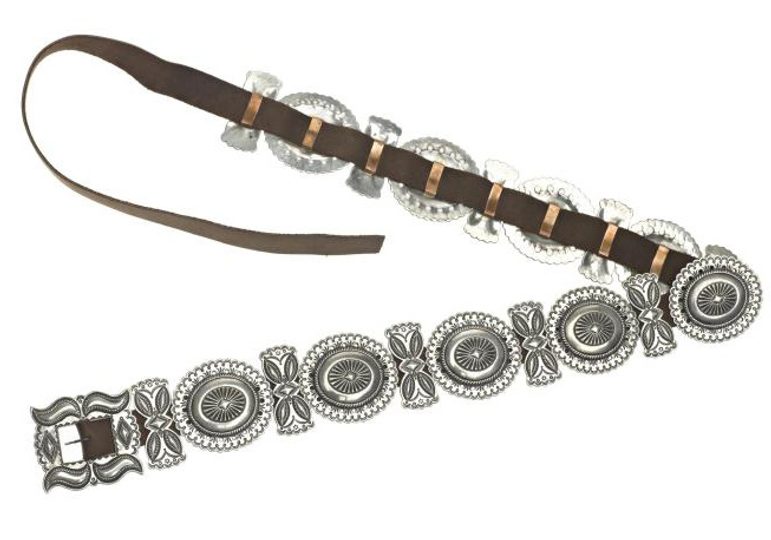
Concho Belt by Perry Shorty in 2019. Made from Sterling silver, copper and leather. Museum referenceV.2009.221.
Perry Shorty lives in Shiprock, New Mexico, on the Navajo Reservation. Shorty began making jewellery in the mid-1980s. He has risen to prominence for his reinterpretation of traditional-style Navajo jewellery. This concho belt evokes the style of early 20th century pieces. There is a balance between the strong sculptural shapes and the heavy working of silver. It features a delicate, almost lace-like, stamp work. It has a rhythmic and dazzling quality.
Squash Blossom necklace by Smokey Gchachu
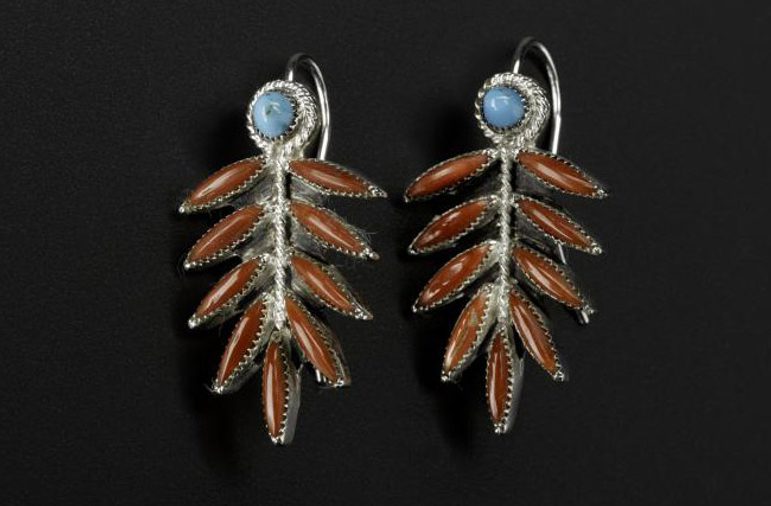
The squash blossom necklace, like the concho belt, is an iconic Southwestern form. It consists of round beads, squash blossoms (here of coral and turquoise), and a central crescent-shaped pendant (naja). Smokey Gchachu lives in Zuni Pueblo and works in the needle point style. This requires patience and exactitude. The style involves setting multiple finely cut stones set against highly polished silver. Gchachu uses traditional Zuni techniques in designs which are more contemporary in feel. He has created a delicate and substantial necklace that features 189 pieces of coral.
Navajo collar tips
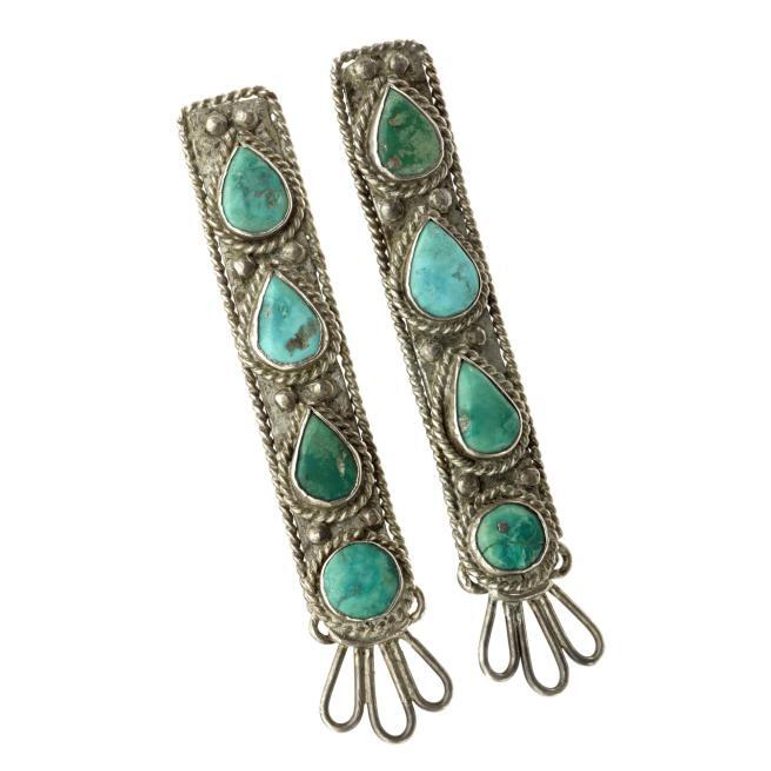
Navajo collar tips made in c.1930s. Made from sterling silver, copper, and turquoise. Donated by Robert Bauver. Museum reference V.2010.50.2.
In 1893, Scottish anthropologist Alexander M. Stephen wrote evocatively of the ‘glitter of silver ornaments’ worn by Navajo men and women riding on horseback. Today Navajo women’s traditional style clothing still includes ornamental collar tips and buttons. These 1930s collar tips use twisted and looped wire. The latter was in vogue in Navajo and Pueblo jewellery of the time. The turquoise was cut by hand. One turquoise was drilled as a bead shown by the silver infill.
Dragonfly brooch
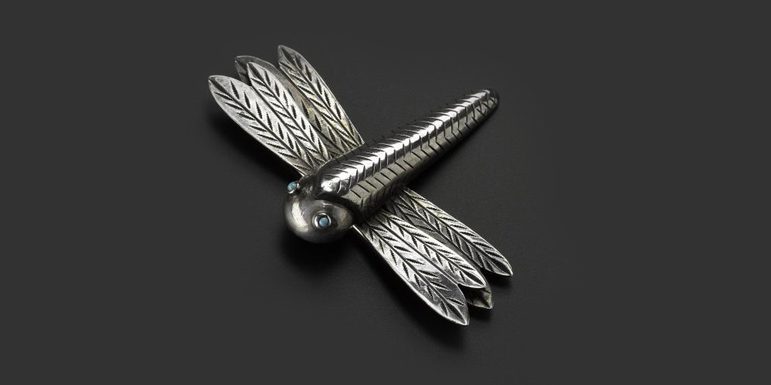
Navajo dragonfly brooch, c 1940s, made from silver and turquoise. Museum reference V.2015.44.
By the mid 20th century Navajo and Pueblo jewellery had been subject to many types of influence. The design of this brooch shows the influence of costume jewellery and modernism. The form is elegant and the stamping economical, used to evoke movement and insect-like qualities. This piece was donated by George Taylor Anderman. It was formerly in the collection of Carl Lewis Druckman (1958-1996).
Dragonfly earrings by Pat Pruitt
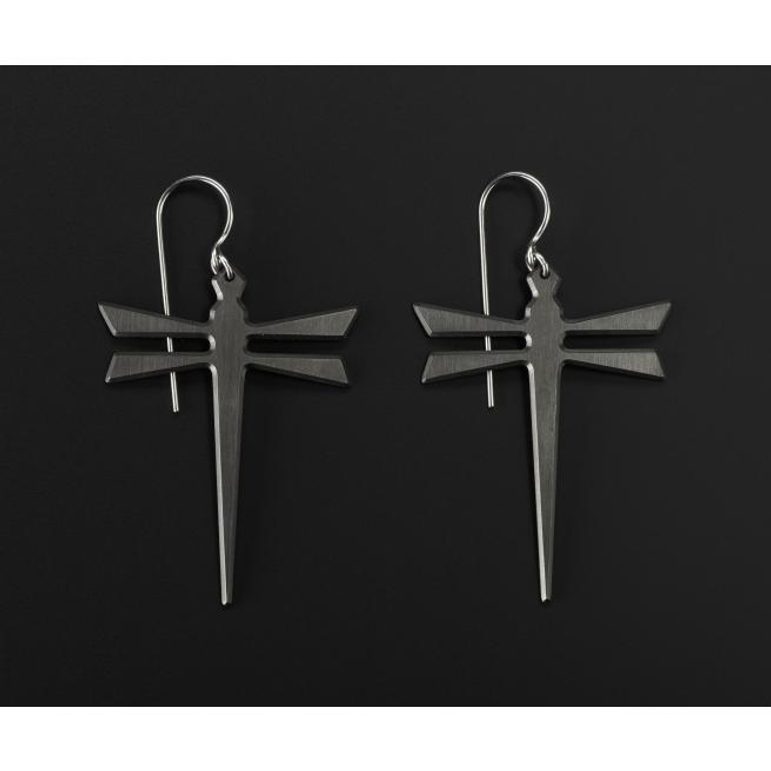
Dragonfly earrings made by Pat Pruitt in 2015. Made from steel and sterling silver. Donated by Pat Pruitt. Museum reference V.2015.44.
Laguna / Chirichahua Apache jeweller Pat Pruitt works with stainless steel. He uses the material here with dramatic effect to represent the dragonfly. The body of the dragonfly is slightly curved. The dragonfly has a ceremonial importance in both Navajo and Pueblo culture. It is represented across a number of art forms. This piece was donated by Pat Pruitt.

